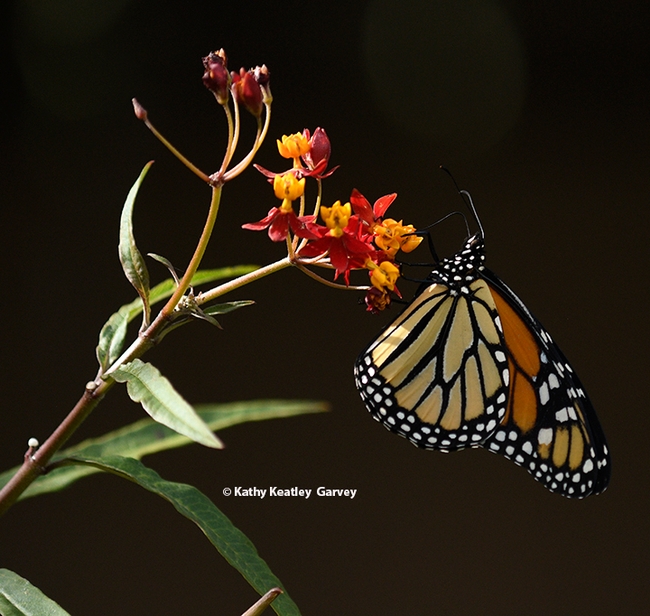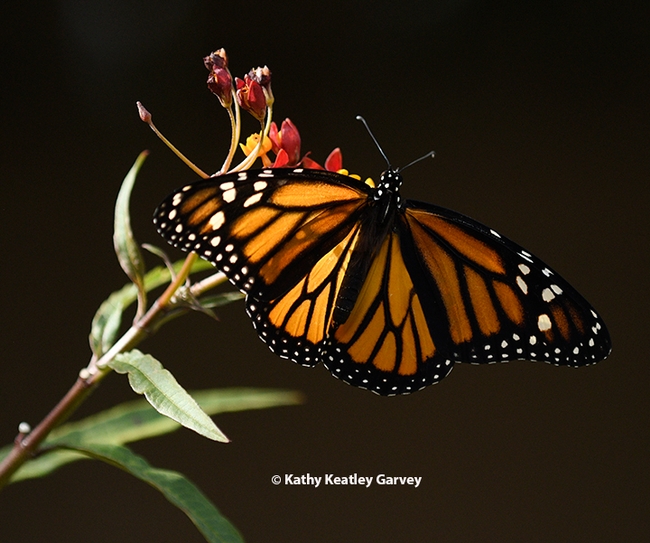It's beginning to look a lot like...Halloween.
If you haven't noticed, stores are gearing up for Halloween with assorted ghosts, goblins and ghouls for you.
We remember Halloween 2023 when a female migratory monarch fluttered into our pollinator garden. She checked out the milkweed (we had several native and one non-native species) and chose to sip nectar on the tropical milkweed, Asclepias curassavica, a non-native.
We managed to capture several images of her around 5:30 p.m. before she left on her journey to overwinter in coastal California.
The Center for Biological Diversity, headquartered in Tucson, says on its website: "Across their range, monarchs are threatened by pesticides, climate change, ongoing suburban sprawl, and fragmented and poisoned habitats as they navigate their way across the continent. They need a helping hand from the government, businesses and concerned individuals."
Threats? To that we'd add a minor threat: such predators as birds, spiders and mantises.
Monarchs in western North America overwinter in coastal California (roosting in eucalyptus, Monterey pines, and Monterey cypresses), while those in eastern North America "have a second home in the Sierra Madre Mountains of Mexico" (roosting in oyamel fir forests), as noted by the U.S. Forest Service.
"Researchers are still investigating what directional aids monarchs use to find their overwintering location," the U.S. Forest Service says. "It appears to be a combination of directional aids such as the magnetic pull of the earth and the position of the sun among others, not one in particular."
We're glad to see that the raging controversy over native vs. non-native milkweed is subsiding a bit, as the more crucial threats are pesticides, habitat loss, and climate change. After all, tropical milkweed, a native of Mexico, has been in California for more than 100 years. And longer than that when you consider that California was once part of Mexico. A. curassavica is also native to Central America (including Belize, Costa Rica, El Salvador, Guatemala, Honduras, Nicaragua, and Panama) and South America (including Colombia, Ecuador, Peru, and Venezuela), according to Johnny Butterflyseed.
Attached Images:

A migrating monarch butterfly stops on Halloween, Oct. 31 to sip nectar from a milkweed in a Vacaville garden. She was on her way to an overwintering site in coastal California. (Photo by Kathy Keatley Garvey)

The female monarch spreads her wings. She stopped in Vacaville on Halloween 2023 for some flight fuel while on her way to an overwintering site in coastal California. (Photo by Kathy Keatley Garvey)